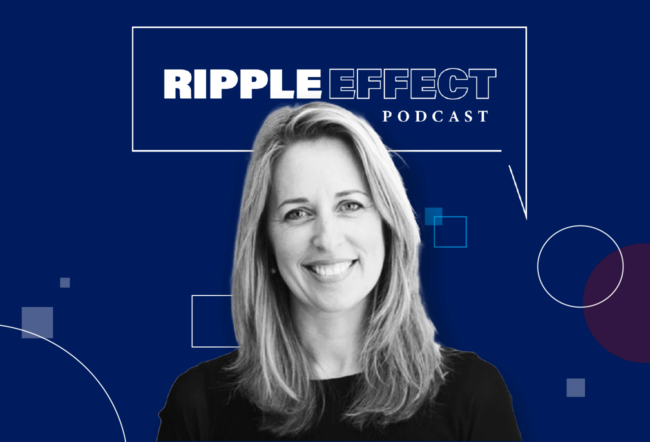A typical farmer in India would grapple with some or all of the following problems in varying degrees:
- Small land holdings of between one and five acres, which do not allow for economies of scale.
- Poor irrigation coverage, high dependence on rainfall and vulnerability to periodic droughts.
- Dependence on water-intensive food crops that have easier access to markets than non-food crops.
- Low or no mechanization in farm practices from sowing to harvesting, resulting in low productivity.
These factors combine to depress farm incomes that fluctuate wildly with the vagaries of rainfall, perpetuating a cycle of impoverishment.
Government programs, banks, microfinance firms, voluntary agencies and farmers’ self-help groups have over time tackled individual pieces of these problems with varying degrees of success. But Gerard Rego, a social entrepreneur and CEO of Bangalore-based VayuGrid (vayu means “wind” in Hindi) believes he has found a business model that promises deliverance from many of the problems all at once. Rego, who is also a member of India Knowledge at Wharton’s advisory board, describes the bare-bones model of the for-profit VayuGrid: It invests along with farmers in cultivating the dry-land oilseeds crops of castor and pongamia — historically used as fuels — bringing scientific farming technology and access to markets. Alongside, it pools farmers’ requirements including those of seeds, equipment and insurance to secure volume discounts, creating a virtual marketplace for thousands of farmers. It powers entrepreneurship by identifying opportunities for mechanization of farm practices and guiding potential entrepreneurs to lenders and suppliers, while enabling higher productivity and incomes.
A Bangalore native and an alumnus of Wharton and Stanford, Rego worked as an IT entrepreneur before launching VayuGrid in 2008 with US$900,000 in start-up capital. Its business model has stood the test of at least one crop season, and in October it secured Rs. 20 crore (US$4.4 million) in equity financing from the Mumbai-based Mahindra & Mahindra (M&M) group, the country’s largest tractor manufacturer, which also has a strong presence in vehicle financing in rural India. M&M will release its financing over three years as VayuGrid meets performance milestones and eventually will be a 51% owner, according to Anirban Ghosh, M&M’s vice president, strategic planning for its farm equipment business.
Social Networks as Capital Stock
Rego says that VayuGrid’s real capital stock is the social network it builds through contracts with farmers who pledge a portion of their land to growing oilseeds. Farmers, he says, benefit almost immediately with savings on farm inputs while VayuGrid earns revenue through commissions or transaction fees from the suppliers it connects with its network of farmers. “We will bring in all these large businesses and become the platform provider to those that sign contracts with us; we give them an aggregated market,” Rego says. “If you want to provide education, we say ‘Here are 500 villages.’ They (the providers) don’t have marketing costs, communication costs, etc; we are doing all that work.”
VayuGrid has built an inventory of nearly 5,000 acres for castor from 2,000 farmers in 180 villages. It plans to add another 5,000 acres to castor in the current cycle and is working on an 8,000-acre community around pongamia, Rego says. In all, he expects to have 15,000 acres in the current crop cycle with pledges from 6,000 farmers. Rego’s target is to build a portfolio of 500,000 acres in the next five years, increasing it to 2 million acres by the eighth year. He wouldn’t disclose VayuGrid’s revenue.
Benjamin Warr, a senior research fellow at INSEAD’s Social Innovation Center in Fontainebleau, France, has studied VayuGrid’s model for 18 months and is writing a case study on it. His primary interest in VayuGrid is its focus on the small farmer. “I have seen a lot of projects in renewable energy but none offers the real benefits of wealth creation across entire communities,” he says. “What excited me about VayuGrid was it has a for-profit business model that promotes wealth creation while providing access to energy.”
Warr finds it interesting that VayuGrid’s model doesn’t rely on subsidies for castor seed cultivation, unlike the jatropha crop that he considers “very dependent on carbon credits.” Locally produced oils from castor and pongamia offer a competitive alternative to kerosene and diesel in “isolated, fragmented communities,” he says, adding that middlemen’s markups negate much of government subsidies by the time those fuels reach village consumers. Warr has visited VayuGrid’s facilities twice and met with VayuMandee franchisees (mandee means “marketplace” in Hindi), village communities and farmers.
No Threat to Food Crops
VayuGrid’s core work is in aggregating small farmers, explains M.V.R. Prasad, the firm’s co-founder and vice president of agri-renewables. Prasad is an agricultural research expert who favors castor and pongamia for their ability to grow in semi-arid conditions and their potential to augment farm incomes. “We don’t encroach upon food production,” he says. “We don’t want irrigated fertile lands but need only marginal lands where farmers cannot grow traditional food crops.” His team has trained 3,000 farmers in cultivating these two crops, and he wants to scale up that effort “on a war footing.” Prasad is convinced the two crops will significantly help farmers find profitable uses for those portions of their land they considered unfit for cultivation. He says VayuGrid targets the three areas of vulnerability for the typical small Indian farmer — credit, technology and marketing.
While the land portfolio will bring economies of scale, Rego is also looking at what he calls “economies of scope” — the scope of activities widens with opportunities across the crop cycle. These include extracting eri silk from the weeds that grow with castor, using biochar (a form of charcoal) to replenish the soil, and selling waste biomass to users of biofuels to produce electricity. VayuGrid is working with government agencies including the National Bank for Agriculture and Rural Development and the Indian Council of Agricultural Research to support its activities in areas including lending and crop productivity. Harnessing biomass is not new and the field has attracted many players, Rego acknowledges, but he spots an opportunity in creating a robust and sustainable supply chain for users. “The challenge is in the supply chain of biomass; we bring that,” he says.
VayuGrid’s participating farmers could realize “big jumps in productivity” and opportunities for entrepreneurship, according to Sambhaji Mane, VayuGrid’s general manager, workflow/mechanization services. Mane’s task is cut out: lower the costs of doing business for farmers, and help them increase productivity with appropriate inputs through crop cycles. He oversees work in four districts of Karnataka state — Chitradurga, Tumkur, Hassan and Davangere.
Fostering Farm-level Entrepreneurship
Mane offers an example of mechanization helping to improve yields and creating entrepreneurs. After a harvest, oilseed pods have to be threshed to separate the seeds from straw. Time is crucial to ensure that crops don’t waste away; castor seeds, for example, have to be threshed within 15 days of harvest for best results. Farmers in VayuGrid target districts manually thresh their crop at the rate of 50 kilograms a day per worker. Their daily wages are about Rs. 200 (US$4.40). But the mechanized threshers VayuGrid encourages them to use can do up to 20 tons a day at about a sixth of the cost, Mane says.
VayuGrid brings other resources farmers typically don’t have access to. For example, it tapped M&M’s AppliTrac farm mechanization division to design the specs for the machines, which were custom-manufactured by a firm in the state of Gujarat. Similarly, it engaged the Central Research Institute for Dryland Agriculture in Hyderabad, a government agency, to design the so-called ridger planters, which help sow seeds more efficiently and faster than manual methods, laying them to precise depths in the soil and at specified distances from each other. Before the ridger planters came along, farmers typically employed bullocks that both cost more and are slower in sowing, Mane says. “The time window for sowing — especially in the kharif monsoon — is small at seven to 15 days,” he adds. “And delayed sowing means lower yield.”
H.D. Bhulingappa, a farmer in Devaramarikunte village in Chitradurga district, is the latest in VayuGrid’s network to invest in a thresher. He bought his thresher in October for Rs. 105,000 (US$ 2,315), and expects to recover his investment within six months. Bhulingappa owns 20 acres and a tractor; he has added castor to his portfolio of sunflower, maize, cotton and other plantation crops like coconut and banana. So far, five farmers in the VayuGrid network have secured loans and invested in threshers and five others have applied for similar loans, Mane says.
VayuGrid also promotes entrepreneurship by creating the VayuMandees (mandee, as mentioned earlier, means “marketplace” in Hindi), and handpicking farmers to run them, says Latha Chandradeep, a general manager at the firm overseeing this function. The VayuMandee is where VayuGrid delivers crop inputs such as seeds and fertilizers on credit, with collections at harvest time, she says. So far, a dozen farmer-entrepreneurs have signed on to run the VayuMandees, each paying a security deposit of Rs. 50,000 (US$1,100).
Synergy in the Barn
M&M’s Ghosh says the VayuGrid investment is a natural fit for his company; it also gives it an entry into social entrepreneurship. “Given the way the way the country is growing, the Indian private sector has a big role to play in the food sector and we see ourselves as part of that ecosystem,” he says. “Working with VayuGrid is a step in that direction.” M&M also has in its fold Mahindra Samriddhi, a network of centers for farmers providing technical, financial and marketing support services.
M&M’s farm business is essentially in equipment and specifically in manufacturing tractors but with a growing portfolio of other types of mechanization, Ghosh says. With VayuGrid, the context may be castor and pongamia, but it is transferable to many other agricultural businesses, he explains, describing that as a “direct synergy” in the investment. “In the next decade we should have a much larger presence across the entire agricultural value chain,” he says. Ghosh says VayuGrid’s focus on growing oilseeds for fuel also matches M&M’s own efforts to use biofuels to run its range of stationary engines, which currently are used mostly to power telecommunications towers.
Ghosh is not unduly worried about VayuGrid’s model producing sufficient returns on investment. “We believe the business is profitable, and if managed well it is worth the investment,” he says.He finds VayuGrid’s model attractive because it “de-risks it completely to the farmer with an ecosystem.” For sure, uncertain rainfall or pest attacks could be spoilers, but periodic monitoring and counseling could help mitigate the downsides, he says.
Project Management the Top Challenge
Ghosh is aware that VayuGrid’s model is untried, and that it does face challenges. “VayuGrid’s team is entrepreneurial, but some of the skills required in pulling this off are not at all entrepreneurial,” he says. “They are very simple and ordinary business skills like project management.” He lists those challenges: ensuring high operational efficiencies, enrolling farmers on time, training them on time, making materials available on time, providing farmers sufficient guidance and inputs, and so on. Scaling up the enrollment of farmers and increasing their productivity “requires very, very stringent project planning,” he says. M&M will track VayuGrid’s performance after seven to eight years before deciding on its next move, Ghosh says.
VayuGrid of course needs to be watchful of pitfalls, says Warr, of INSEAD, including the risk of “disenfranchisement” of the farmer. Warr explains that “anything which involves land and rural communities” is vulnerable to political pressures. Rego, however, points out that he has thus far encountered no political interference and doesn’t see that as a problem waiting to happen. Warr’s other concern is the risk of farmers failing to fulfill their side of the contract, either by neglecting that portion of their farms or not following prescribed scientific farming methods. All the same, he feels VayuGrid’s emphasis on developing complementary revenue streams around oilseeds and the social lock-in through community involvement would help sustain farmer involvement.



